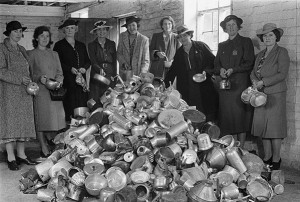The most difficult aspect of grant rejection, apart from not having a grant of course, is that your motivation to write new applications evaporates. That’s why it’s even more important than working out what was wrong with your rejected application to salvage what you can from the rejected application and start putting together a new one.
It is of course important to take the opportunity to learn what you can about what was wrong with the rejected application and I wrote about how to do that last week. However, whether or not you learn anything from it, you must come to terms with the fact that your rejected application is dead. Yes, dead. I’m sorry, I did say dead and I do mean dead. Mourn its passing but do not imagine that editing will reanimate its corpse. Use your editing pencil instead to mark useful parts to salvage and recycle.
Salvage the Sub-Projects One at a Time
The most important part of the case for support is the description of the project. This should be at least half the case for support and it should be subdivided into three or four sub-projects. If it isn’t subdivided into projects then you can divide it up as you salvage it.
A sub-project is a discrete set of research activities designed to produce a definable outcome. You must divide your project into sub-projects in order to make it accessible for the grants committee. Remember, they are not experts in your field so they are unlikely to appreciate your project unless you can break it into bite-sized chunks.
If you cannot easily divide your research into sub-projects you can use the timeline of your project to divide it into phases. You will need to be able to say in a single sentence what you expect to be the outcome of each phase. If it’s impossible to do this you need to think again. You won’t get funding for a research project unless you can produce a succinct statement about what you expect to have happened by the time you are about a third of the way through it. Of course you can use natural break-points in your project to divide it into phases that are not exactly equal, but if you want to get funded you must be able to give confidence that you will are able to plan the progress of your research.
Record Key Information About Each Sub-Project
To make it easy to re-use the sub-projects you need to record extra information with them. I suggested in a previous post that you should compile a catalogue of sub-projects with this information.
- The most important thing to record is what the outcome would be if you were to carry out the sub-project. You should use this to draft a key sentence that describes the sub-project and states the outcome, unless you have already written such a sentence.
- A list of the research activities that comprise the sub-project.
- A list of the skills needed to carry out the sub-project.
- A list of the resources needed to carry out the activities in the sub-project. This consists of 2 sub-lists:-
- resources already available to you, and
- resources you need the grant to pay for.
If you can salvage all of your sub-projects you should have about half what you need for another grant application. However I strongly recommend that you try to create a portfolio of sub-projects so that you can re-use them in different combinations.
Useful Sentences and Phrases
The descriptions of the sub-projects are the only large chunks of text that I would advise you to salvage from the proposal. The other sub-sections will probably not be relevant if you restructure your project, which I strongly advise you to do. However, there are some snippets of text that could be worth salvaging from the rejected proposal.
- Key sentences, other than those in the sections of text you have salvaged, are probably not worth salvaging. The ones that express the need to do the sub-projects you have salvaged will be useful but they are very easy to write. Any others should be viewed with suspicion because they have failed.
- Sentences that refer to your research and project management skills and those of your team are quite difficult to write and should be salvaged if they read well. If your project is for BBSRC, NERC, MRC or EPSRC there will be whole sections of text describing the accomplishments of the different members of the project team that should be salvageable.
- Descriptions of how existing resources will be used should also be salvaged, even when they are part of sub-projects that you may not re-use.
Finally, a word of caution, be suspicious of all the text you are salvaging. Something in your grant application sank it and, unless your feedback made it very clear what it was, you should be cautious about the possibility of salvaging something that could sink the next one.

